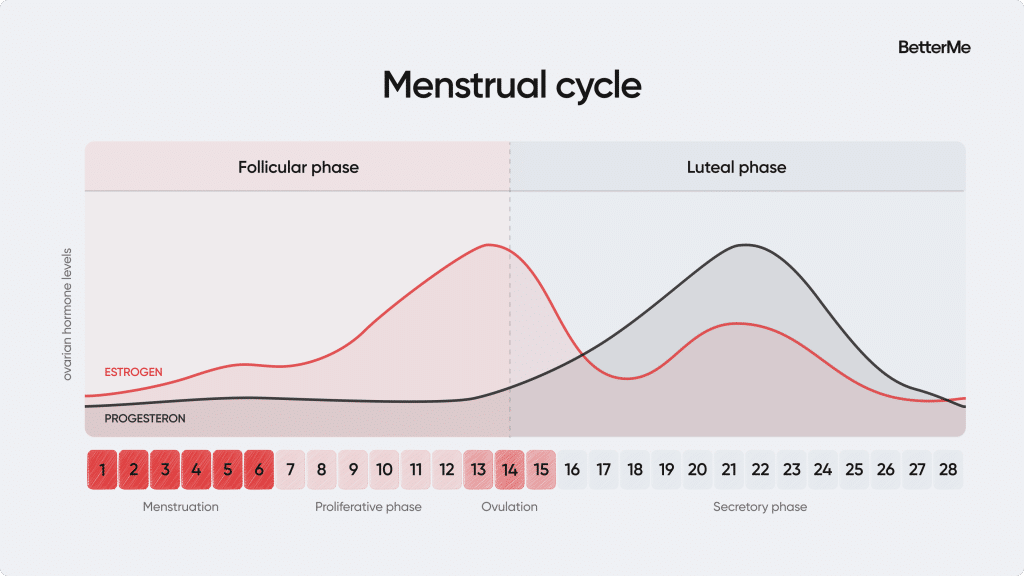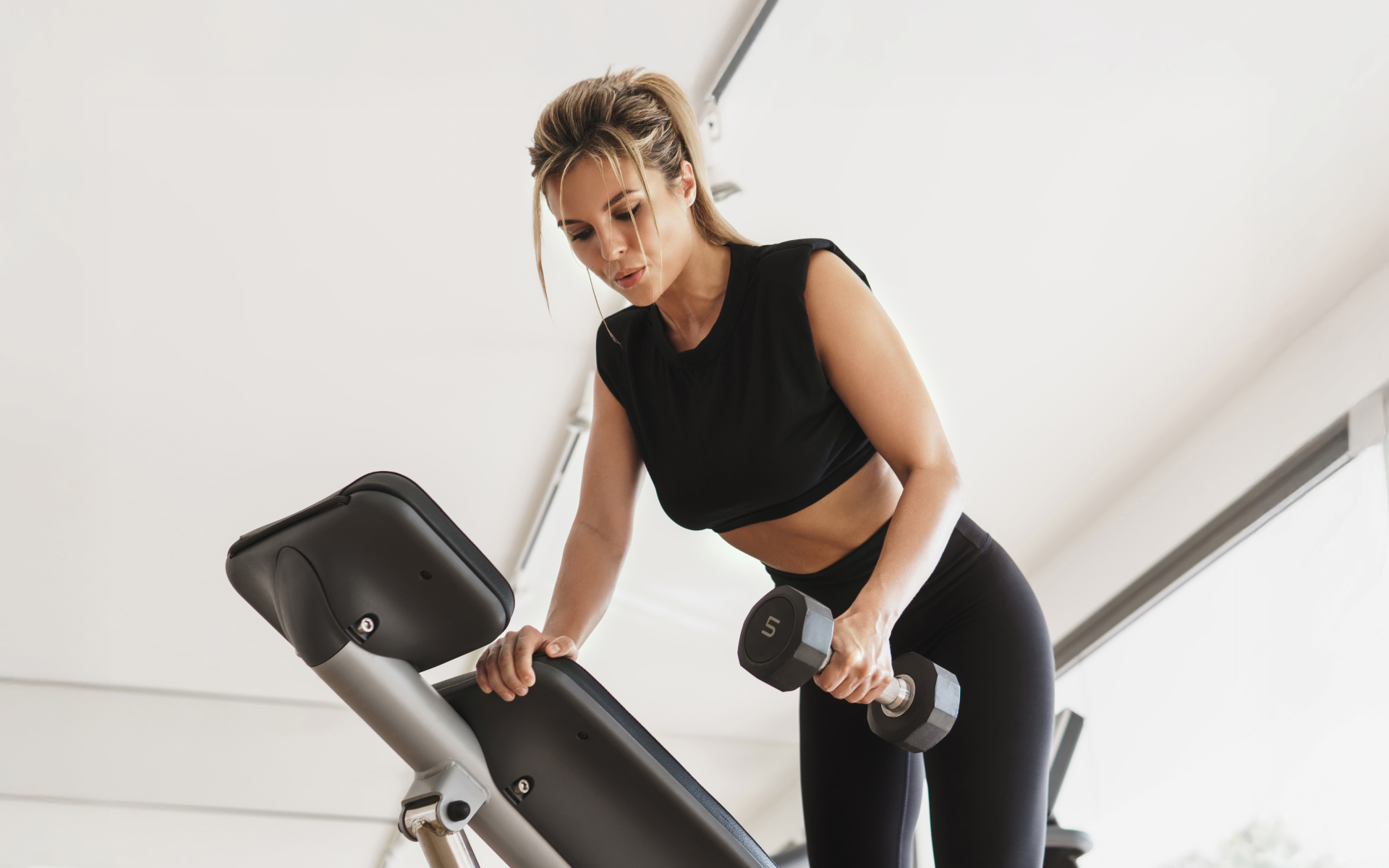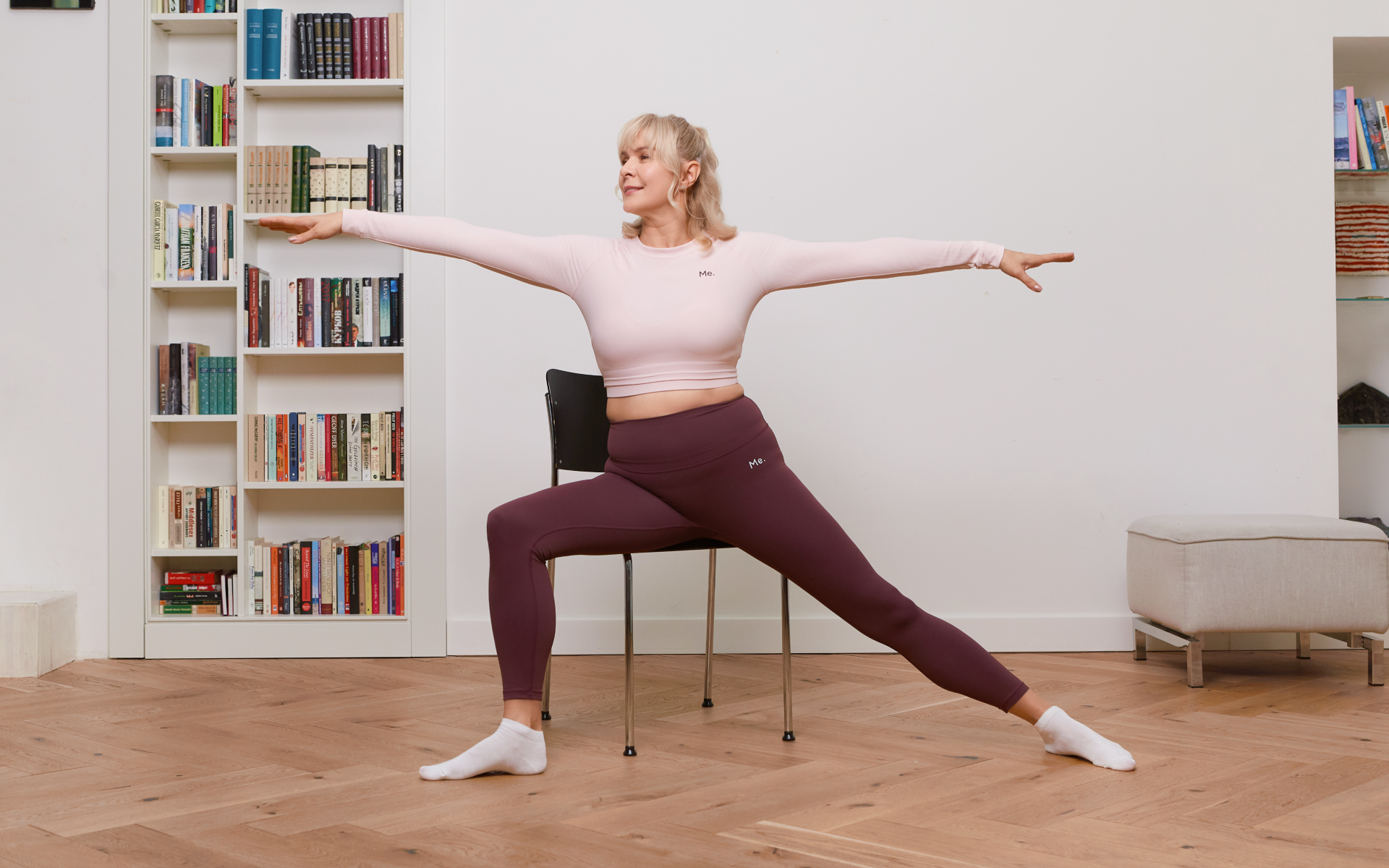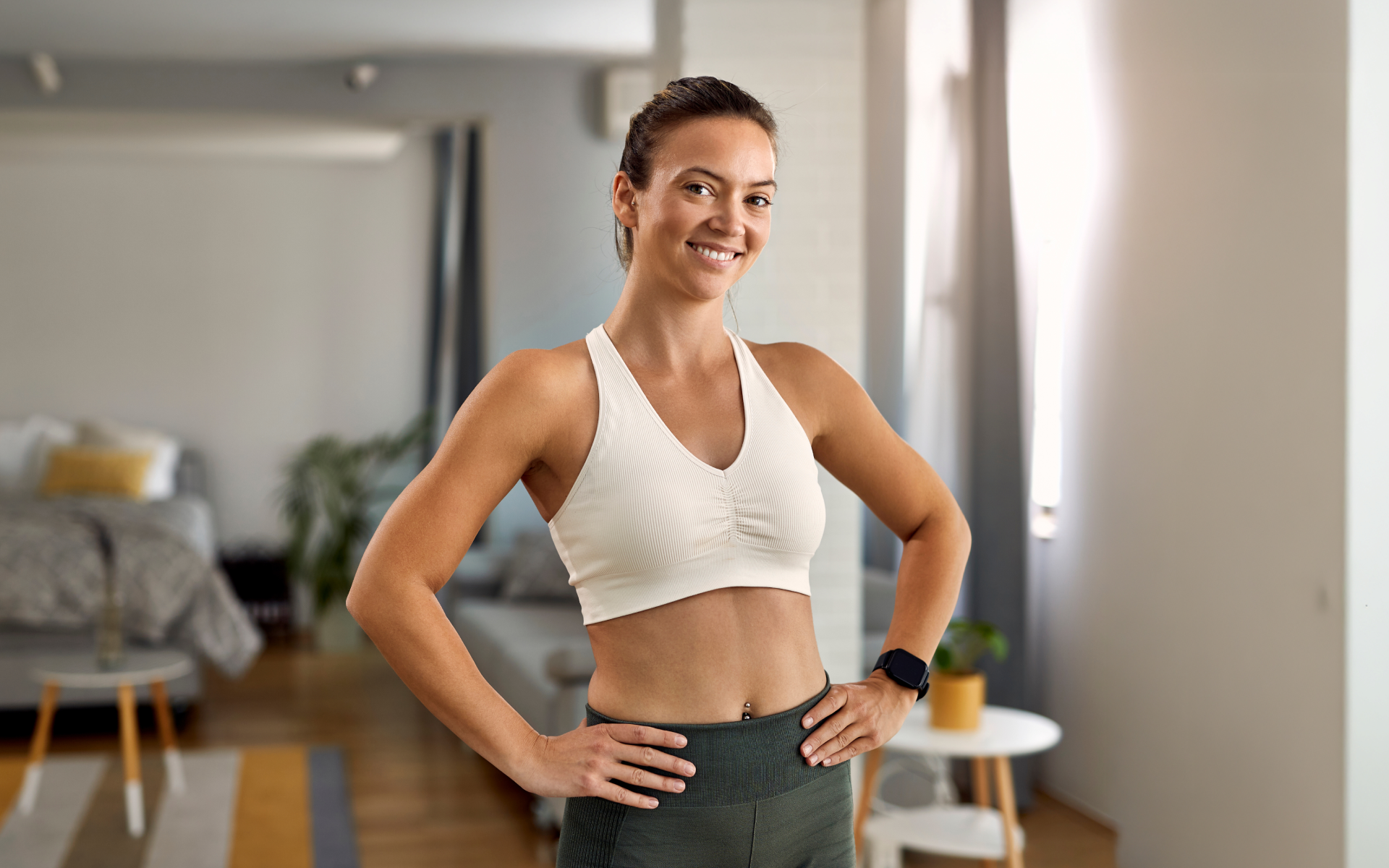Being a woman isn’t always easy. But could something as simple as changing your mindset, learning more about your body, and adjusting your lifestyle to your menstrual cycles be the thing to help make things easier?
Cycle syncing is a practice some people believe could be beneficial to many women, despite a lack of extensive research on the topic. Those who support cycle syncing also claim that implementing specific food choices and workouts for each phase of your menstrual cycle can reduce the common symptoms of monthly hormonal fluctuations.
But is this true? Can adjusting your lifestyle to your menstrual cycle be effective? Are there any benefits? Read on to learn more about cycle syncing.
By the end of this article, you’ll know more about the following key themes:
- The phases of your menstrual cycle and the definition of cycle syncing
- Whether cycle syncing can have an impact on your workouts
- Personalized approaches for optimizing health and fitness during menstrual cycle phases
- The impact of cycle syncing on building muscle, losing weight, and more
What Is Cycle Syncing?
Cycle syncing is the practice of adapting your lifestyle and routines around the four phases of your menstrual cycle: menstruation, the follicular phase, ovulation, and the luteal phase. (1) All month long, women’s bodies experience changing levels of hormones, depending on which part of the cycle they’re on.
The fluctuating hormone levels can impact you both physically and mentally. They may make you feel anything from exhausted to invigorated, blue and teary, self-reflective, and much more.
Proponents of cycle syncing say that by noting the menstrual cycle phase and adjusting your diet, exercise, and approach to work and relationships, you can help decrease (or better manage) the effects of the normal pattern of hormonal volatility that comes with menses and which can create certain monthly inconveniences.2
Studies have shown that women’s hormones fluctuate throughout the month and these changes can affect behavior, appetite, weight, and energy levels.
Before we go any further, let’s review what happens during your menstrual cycle.
Intense sweat sessions, working weight loss tips, lip-smacking recipes come in one package with the BetterMe app. And all of it is at your fingertips, start transforming your life now!
The 4 Phases of Menses
The typical period cycle has four phases. The descriptions outline what happens in the bodies of eumenorrheic women (women whose cycles predictably and typically last 28 days, but can vary considerably): (2)
-
Menstrual phase (days 1 to 5)
During this phase, there is active bleeding and estrogen and progesterone levels are low. You may feel tired and lack the energy to handle normal tasks.
-
Follicular phase (days 1 to 13)
In Phase 2, your estrogen levels amp up. You can start to feel energetic and happier and some women may also note an increase in sex drive.
-
Ovulation phase (days 14 to 15)
During this time, your ovaries release the egg. Estrogen and testosterone levels increase, so you may feel even more energetic than during the follicular phase. In this phase, your sex drive can increase further.
-
Luteal phase (days 16 to 28)
Finally, during Phase 4, estrogen and progesterone levels are high, but levels promptly decrease if the egg isn’t fertilized. The menstrual cycle then starts again.
Many women start to experience premenstrual syndrome (PMS ) symptoms, which present both physically (e.g. abdominal cramping, breast tenderness, food cravings, achiness, headache, bloating, changes in bowel habits, and sleep issues) and emotionally (e.g. mood swings, feeling down and having crying jags, irritability, anxiety, and problems with concentration).
Read more: Understanding the Benefits of Bicycle Crunches To Unlock Your Core’s Potential
Are Cycle Syncing Workouts Legit?
A 2023 review concluded that dietary energy intake varied across the menstrual cycle, typically being lower during the follicular phase compared to the luteal phase, with a particular decrease around ovulation. However, the magnitude of these fluctuations was found to not be clearly quantifiable and varied between individuals and cycles. (3)
In 2019, a study published in The National Medical Journal of India found that during the luteal phase of the cycle, more women experienced a loss of appetite, abdominal pain and swelling, weight gain, nausea, anxiety, and fatigue. Not only did their quality of life decrease, their dietary choices also worsened. (4)
Proponents of cycle syncing claim that if you better understand how your body works during each phase, you can plan your life more effectively. So how might this play out?
You could plan meetings, friend hangouts, and hard workout sessions during the energetic phase of your cycle and plan to stay at home more, binge-watch movies, and do shorter and easier exercises right before or during your period.
Cycle Syncing: What Does the Research Say?
So how does all this affect your workout schedule and performance? Does being in a specific phase of your cycle determine how well you perform at the gym or during sporting activities, or even just how you feel when being physically active?
Let’s look at what studies over the years have said about cycle syncing:
In 2020
- According to a study in the Sports Medicine journal on sex hormone fluctuations across the menstrual cycle, exercise performance can reduce slightly during the early follicular phase.
Researchers suggested that instead of general guidelines, it would be best to tailor workout programs based on each woman’s exercise performance across the menstrual cycle (5)
In 2021
- In a study published in the Physiology & Behavior journal, researchers found that women’s reactions to exercise before and after physical activity varied. (6)
During the luteal phase, they showed greater tension, hostility, and lower arousal, affect, and motivation pre-exercise compared to when in the follicular phase.
Women’s psychological responses to exercise changed during the luteal phase of their menstrual cycle. More specifically, women felt less motivated and experienced higher perceived exertion during this phase, although their physical performance metrics remained unchanged compared to in other phases.
These findings suggest that while women may feel more tired and less inclined to exercise during the luteal phase, their actual physical abilities are not impaired. These results highlight the importance of considering psychological factors when planning workouts during the menstrual cycle. - A study review in the International Journal of Environmental Research and Public Health found that the perceived performance of female athletes appeared to worsen during the early follicular and late luteal phases.
However, it also indicated that the results regarding objective performance were not consistent and more research was required. (7)
In 2023
- In a study published in the Frontiers in Sports and Active Living, researchers acknowledged that menstrual symptoms can influence exercise performance in some women.
It found that during the luteal phase, women felt more tired and less motivated to exercise, although their physical strength and endurance remained unchanged. The study highlighted that psychological factors are significant metrics in planning exercise routines as they influence a person’s adherence to a workout routine and perceived effort more than physical performance.
In addition, the study concluded that short-term fluctuations in ovarian hormones did not significantly impact exercise performance or long-term resistance training adaptations. Therefore, creating exercise prescriptions based on these hormonal changes is not evidence-based due to methodological shortcomings in existing research. (8).
In 2024
- In one 2024 study, it was found that menstrual cycle symptoms, such as pain and fatigue, often limit recreational physical activity (RPA) in cyclically menstruating individuals. Sociocultural taboos and lack of menstrual health knowledge also present significant barriers. The review highlights the need for personalized approaches to encourage RPA throughout the menstrual cycle and calls for better educational resources to address these barriers (9).
Another 2024 study found that different phases of the menstrual cycle affected physical activity patterns. Findings indicated that women tended to engage in less intense physical activities during the menstrual and late luteal phases due to symptoms such as cramping and fatigue. The study also suggested that women may benefit from tailoring their exercise routines to their menstrual cycle phases to enhance comfort and commitment to physical activity (10).
So what does this mean in terms of cycle syncing workouts? Are cycle-syncing workouts legit? It’s difficult to say. While all the above studies acknowledge that your cycle can affect how you perform at the gym, they also state that these findings aren’t concrete enough to give blanket advice on exercise programs based on menstrual cycle phases.
Whether you’re looking to simply pep up your fitness routine, jazz up your diet with mouth-watering low-calorie recipes or want to get your act together and significantly drop that number on your scale – BetterMe app has got you covered! Improve your body and revamp your life with us!
Cycle Syncing: Physical Activity to Consider in Each Phase
If you’d still like to try syncing your cycle to your fitness over the next few months to see if you notice any positive impact, here’s what you should consider during each phase, depending on your individual symptoms, energy and motivation levels, and response to different activities (11)
| Cycle phase | Possible symptoms | Potential exercises |
|---|---|---|
| Menstrual | Cramping, bleeding, mood swings, feeling tired, bloating, etc. | Yoga, walking, Pilates, stretching, etc. Low-intensity exercises like this can help reduce cramping and improve blood flow (12) |
| Follicular | No cramps, no PMS, and higher estrogen and progesterone levels mean more energy | Increase workout intensity - hiking, weight training, swimming, Zumba, or brisk/power walking are excellent options |
| Ovulation | Estrogen and progesterone levels are at their peak - your energy and sex drive are very high | The same exercises as those done in the follicular phase work here too - just increase the intensity by adding heavier weights or doing the workouts for longer HIIT, Tabata, and intense cardio such as running and skipping rope are perfect for this phase |
| Luteal | Energy levels start to dip | Low-intensity workouts such as yoga, tai chi, and walking work best for this phase For those with some extra energy, the exercises listed under the follicular phase could also work |
It’s important to remember that cycle syncing is based on the 28-day period cycle that most women don’t have. While this cycle pattern is seen as regular and used as the baseline for many studies, research has indicated:
- Cycles are often inconsistent, vary from person to person, and can be affected by environmental circumstances such as stress and lifestyle (13).
- 46% of women have cycle lengths that fluctuate by around seven days, with a further 20% exhibiting fluctuations of up to 14 days. This means that a regular cycle varies for each person (14).
Basically, while cycle syncing may seem to make logical sense, research appears to suggest that its benefits are more theoretical than proven.
Should You Change Your Eating Habits to Sync with Your Cycle?
Research on food consumption, eating habits, and cycle syncing remains limited, but in terms of how women eat during their cycle, some studies have found an increase in cravings right before and during the period, while others have produced inconsistent results (15, 16, 17)
However, if you’re still curious, below are some ideas for foods to focus on. (2) Unless there are certain foods you shouldn’t eat for medical reasons or you simply don’t like, you don’t need to make major changes to your diet or avoid certain foods at certain times of the month. The options below are consistent with many diets that are recommended as ones to optimize your overall health and well-being and reduce your risk of conditions such as heart disease, diabetes, and obesity, e.g. the Mediterranean diet.
Menstrual phase
You may crave junk food and sweets at this time, but such foods have little nutritional value. You can eat the foods you crave, but try to make sure your overall diet is still balanced. Some nutritious foods to include:
- Iron-rich foods such as green leafy vegetables, lentils, lean red meat, and beans. Iron is needed to help avoid the potential development of anemia from the blood loss of menses (18).
- Vitamin C-rich foods and fruits such as citrus fruits, berries, broccoli, and red peppers. Vitamin C helps with iron absorption (19).
- Foods high in Vitamin K such as leafy greens, (e.g. spinach, kale, collards) hard cheese, Brussels sprouts, and kiwi. These leafy greens and vegetables that are rich in vitamin K may also help reduce menstrual pain and decrease the length of prolonged menstrual flow (20).
- Omega-3 fatty acids are found in certain fish (salmon, mackerel, sardines, and herring for tinned fish fans), flaxseed, chia seeds, and walnuts. Research has suggested that these fatty acids could help with the management of PMS, such as inflammation and cramping (21).
Follicular phase
If you’re feeling energetic and up for more intense workouts, support them with foods that are rich in protein and complex carbs. Lean meats and soy products are excellent sources of protein. Soy protein has also been found to reduce the risk of heart disease, high cholesterol, and thinning bones.
Complex carbs can be found in whole grains such as brown rice, whole wheat, and quinoa, in addition to in starchy vegetables such as sweet potatoes, corn, and butternut squash.
Ovulation phase
Food intake for this phase is said to work the same as during the follicular phase. Therefore, you should concentrate on complex carbs and lean protein, eat your fruits and vegetables, and don’t forget your healthy fats.
Basically, stick to a healthy and balanced diet, as always.
Luteal phase
This phase right before your period starts can bring PMS, increased hunger, and cravings. This is a time when many people who are trying to eat healthier often fall off the wagon. Rather than giving in to the cravings, you should eat foods that are more filling to put a stop to excessive hunger. Complex carbs and lean protein are great for this.
Those who are trying to eat healthier or lose weight but crave sweets and pastries can opt instead for fruits, nuts, and dark chocolate. They may not give you the sugar kick you wish for, but training your mind to think of this switch as a regret-free reward will eventually help you pick these healthier options over high-calorie, high-added sugar ones.
If you’re planning to fast during your period, please read our Fasting While On Period post.
Can You Build Muscle While Cycle Syncing?
Some evidence has indicated that you can build muscle and benefit from tailoring your workouts to whenever you feel strongest.
A 2023 meta-analysis (the statistical process of analyzing and combining results from several similar studies) found some women were more likely to gain more muscle mass and strength when training during the follicular phase than during the luteal phase (8).
However, the overall conclusion was that many of the studies reviewed were flawed/poorly designed and/or did not have sufficient underpinnings to draw a definitive conclusion that cycle syncing impacted muscle mass.
Can You Cycle Sync on Birth Control?
You most likely cannot cycle sync on hormonal birth control. Not only is cycle syncing a fairly new concept that seems to largely base its recommendations on a natural 28-day cycle that is not found in the majority of women, but birth control changes your natural cycle hormonally.
Can Cycle Syncing Help You Lose Weight?
A combination of watching the quality, balance, and portion size of your food, your eating habits, keeping an eye on calories, and engaging consistently in physical activity can help you lose and maintain a healthy weight. Physical activity should include movement to support cardio, strength training, flexibility, and balance. Cycle syncing in itself is not a direct weight loss strategy, but tailoring your exercise routine to how you feel and respond may help you include more movement more consistently, which is likely to help you on your weight loss journey. And if you’re significantly overweight or obese, a review of treatment options and a care plan developed with a licensed medical professional with the requisite training and expertise increases the likelihood of achieving weight loss in a way that is both healthy and sustainable. Most people lose weight on fad/extreme diets, but can’t maintain it and also put their health in jeopardy, which adds another issue to the mix.
Read more: Is Biking Aerobic Or Anaerobic? Yes, You CAN Cycle Your Way To Weight Loss
Is It Beneficial to Cycle Sync?
Proponents of this theory believe cycle syncing could improve your quality of life. They point to potential benefits such as:
- Reduced PMS and cramps
- Better mood management
- Lower stress levels
- Improved energy levels
- More effective workout routine
- Fertility support for those who wish to conceive
While this all sounds amazing, most of these purported benefits are largely anecdotal, and there is little to no consistent research to support the claims.
The Bottom Line
Despite many fans of cycle syncing who have reported that it has changed their lives, the outcomes observed in medical research over the years remain mixed. The theory also doesn’t account for those with irregular periods or those with a regular period cycle that does not fit the “28-day profile”.
DISCLAIMER:
This article is intended for general informational purposes only and does not serve to address individual circumstances. It is not a substitute for professional advice or help and should not be relied on for making any kind of decision-making. Any action taken as a direct or indirect result of the information in this article is entirely at your own risk and is your sole responsibility.
BetterMe, its content staff, and its medical advisors accept no responsibility for inaccuracies, errors, misstatements, inconsistencies, or omissions and specifically disclaim any liability, loss or risk, personal, professional or otherwise, which may be incurred as a consequence, directly or indirectly, of the use and/or application of any content.
You should always seek the advice of your physician or other qualified health provider with any questions you may have regarding a medical condition or your specific situation. Never disregard professional medical advice or delay seeking it because of BetterMe content. If you suspect or think you may have a medical emergency, call your doctor.
SOURCES:
- Physiology, Menstrual Cycle (2022, ncbi.nlm.nih.gov)
- Nutrition and Exercise Throughout Your Menstrual Cycle (2023, clevelandclinic.org)
- Dietary energy intake across the menstrual cycle: a narrative review (2023, pubmed.ncbi.nlm.nih.gov)
- Prevalence of premenstrual syndrome and its impact on quality of life among selected college students in Puducherry (2019, pubmed.ncbi.nlm.nih.gov)
- The Effects of Menstrual Cycle Phase on Exercise Performance in Eumenorrheic Women: A Systematic Review and Meta-Analysis (2020, ncbi.nlm.nih.gov)
- The effect of menstrual cycle and exercise intensity on psychological and physiological responses in healthy eumenorrheic women (2021, sciencedirect.com)
- The Impact of Menstrual Cycle Phase on Athletes’ Performance: A Narrative Review (2021, ncbi.nlm.nih.gov)
- Current evidence shows no influence of women’s menstrual cycle phase on acute strength performance or adaptations to resistance exercise training (2023, frontiersin.org)
- Impact of symptoms, experiences, and perceptions of the menstrual cycle on recreational physical activity of cyclically menstruating individuals: A systematic review (2024, pubmed.ncbi.nlm.nih.gov)
- The Effect of Menstrual Cycle Phase on Perceived Exertion During Aerobic Exercise in Eumenorrheic Women (2024, pubmed.ncbi.nlm.nih.gov)
- Cycle Syncing: Everything You Need To Know (2023, forbes.com)
- Management of dysmenorrhea through yoga: A narrative review (2023, ncbi.nlm.nih.gov)
- Real-world menstrual cycle characteristics of more than 600,000 menstrual cycles (2019, nature.com)
- How regular is regular? An analysis of menstrual cycle regularity (2021, sciencedirect.com)
- Do Food Intake and Food Cravings Change during the Menstrual Cycle of Young Women? (2018, ncbi.nlm.nih.gov)
- Food preferences throughout the menstrual cycle – A computer-assisted neuro-endocrino-psychological investigation (2022, sciencedirect.com)
- Food-related exploration across the menstrual cycle (2024, sciencedirect.com)
- Prevalence of Anemia and Iron Deficiency in Women of Reproductive Age in Cuba and Associated Factors (2023, ncbi.nlm.nih.gov)
- The Efficacy and Safety of Vitamin C for Iron Supplementation in Adult Patients With Iron Deficiency Anemia (2020, jamanetwork.com)
- Plasma phylloquinone concentrations increase following acupoint injection for primary dysmenorrhea (2014, ncbi.nlm.nih.gov)
- Effect of omega-3 fatty acids on premenstrual syndrome: A systematic review and meta-analysis (2022, obgyn.onlinelibrary.wiley.com)













